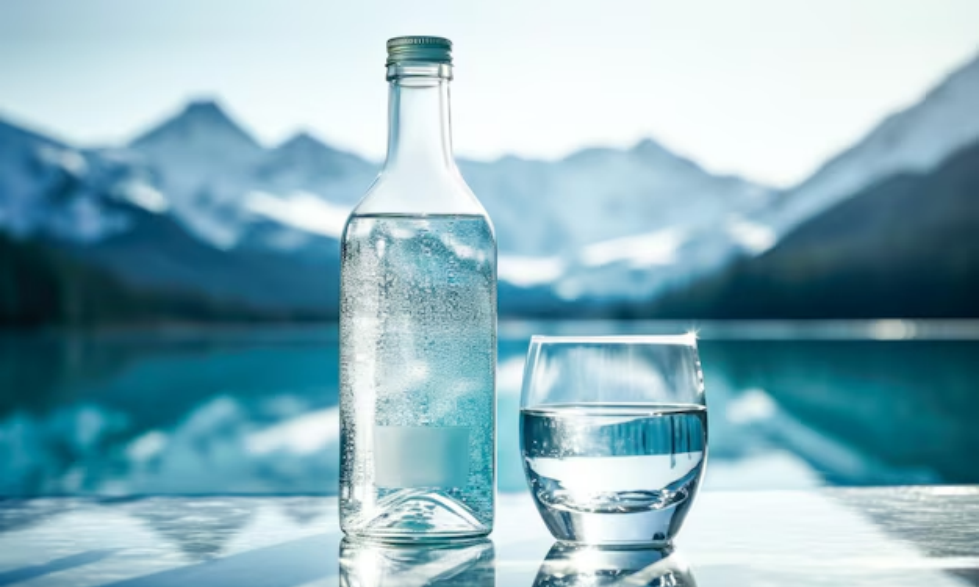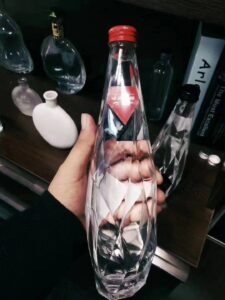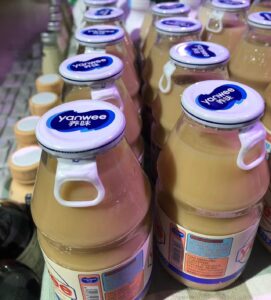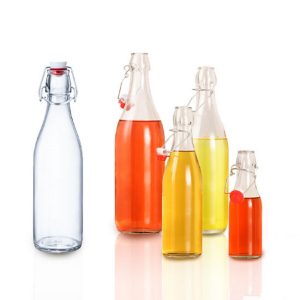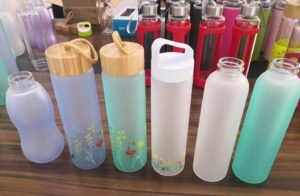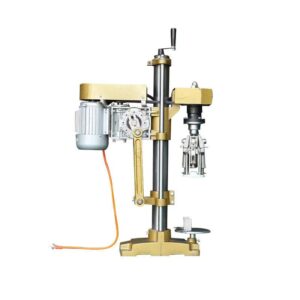Introduction
The use of glass water bottles has also been on the rise in the recent past due to the negative effects of plastic bottles. Glass is a chemical inert material that does not contaminate water with any chemicals hence is healthy to use. It is crucial to cover glass water bottles well to ensure the water remains clean as well as to avoid spilling the water. This guide will guide through the different techniques of sealing different types of glass water bottles.
Importance of Sealing Glass Water Bottles
Sealing glass water bottles correctly serves several important purposes:
Prevents Contamination
Sealing of glass water bottles ensures that they are not contaminated by dirt, bacteria and other pollutants in the environment. An unsealed or a loosely sealed bottle exposes the bottle to contamination and the contaminants get into the bottle and mix with the water. This can lead to deterioration of the quality, taste and safety of the drinking water being supplied to the public. The bottle is sealed in a manner that it does not allow any form of interference from external elements. The correct seal helps in preventing the intrusion of foreign matter into the water while at the same time keeping the water clean.
Avoids Leaks and Spills
Sealing a glass water bottle correctly avoids messy leaks and spills. Bottles that are not properly sealed will drip or spill out the contents when tipped or inverted. This wastes the water and makes a mess that no one wants to clean up. An adequate seal keeps the water securely inside, even when the bottle is moved around or placed in a bag or pack. This allows worry-free transport and storage without the hassle of water leaks and drips. The right sealing method for the bottle type creates a watertight barrier for portable, spill-proof usage.
Retains Carbonation
Carbonated drinks require an airtight seal in order to maintain the carbonation. Carbonation occurs when carbon dioxide gas is dissolved into the liquid. This produces the bubbles and fizz in drinks like soda, sparkling water and beer. The carbon dioxide will rapidly escape from drinks in a bottle that is not properly sealed. As the gas escapes, the drink loses its effervescence and goes flat. A tight seal prevents the carbon dioxide from escaping by creating an impermeable barrier. Only an airtight seal will retain the carbonation over time.
Maintains Temperature
In addition to retaining carbonation, a tight seal also maintains the desired temperature of bottle contents. Heat transfers rapidly out of an unsealed container. Insufficient sealing allows the heat to escape through gaps between the bottle and lid. Proper sealing minimizes air gaps for better insulation. This retains both hot and cold temperatures for longer periods. A well-sealed glass bottle will keep water chilled on a hot day, or tea piping hot on a cold morning. The right seal locks in the initial temperature for optimal enjoyment of the contents.
Taking the time to properly seal glass water bottles is a simple way to optimize the drinking experience and get the most out of your glass bottle.
Customizing the Glass Water Bottle Mouth
As a custom glass bottle manufacturer in China, MC Glass are requested by many clients to produce different size and shaped water bottles to fit their needs. The places can be hotel, a meeting room, in a kitchen and on shelves in the mall.
Glass water bottles come in a variety of shapes, sizes and mouth openings. The type of bottle you select will determine the sealing options available to you. Most glass bottles fall into one of these common mouth styles:
28mm ROPP Cap
The 28mm mouth is one of the smallest openings and is designed to work with a ROPP cap. ROPP caps are metal caps that crimp over the mouth of the bottle to create a tight seal.
To use a ROPP cap:
- Purchase glass bottles that are specifically designed for ROPP caps. The opening will be 28mm.
- Select the appropriately sized ROPP cap for the bottle mouth. ROPP caps come in different colors and materials like aluminum, steel or plastic.
- Clean the mouth of the bottle thoroughly to ensure a good seal.
- Center the cap over the opening and place the bottle capper over the cap.
- Use the bottle capper tool to crimp the cap snugly over the rim of the glass bottle. Apply firm pressure to get a tight seal.
- Check that the cap is on securely and evenly. Try gently pulling at the edges to test the seal.
ROPP caps create an airtight, watertight seal that is tamper-evident, as the cap must be removed to access the contents. This makes it a popular choice for commercial bottling.
42mm Pull Off Cap
42mm is another common mouth size that accommodates a pull off style cap. These caps seal with a rubber gasket on the inside of the cap that presses against the rim of the bottle mouth.
To use a 42mm pull off cap:
- Select a glass bottle designed for a 42mm opening.
- Choose a pull off cap made of metal or plastic that is sized for a 42mm mouth. Silicone gaskets provide the best seal.
- Wash the bottle mouth thoroughly before sealing to remove any dust or debris.
- Align the cap over the opening and push down firmly until it fully snaps into place.
- Gently tug on the cap to ensure it has a tight grip on the bottle neck.
- To open, simply pull up on the cap to break the seal. Check the gasket regularly for cracks or damage.
The tight seal of a pull off cap keeps the contents protected and makes it easy to open and close the bottle as needed.
Swing Top Bottles
Swing top bottles are identifiable by the wire cage that clamps down on the glass or ceramic stopper. The stopper is compressed when closing the swing top to create an airtight seal.
To use a swing top bottle:
- Select a glass bottle with an integrated swing top wire cage and stopper. The stopper will match the bottle mouth diameter.
- Wash the stopper and mouth of the bottle before first use to maximize the seal.
- To close, place the stopper in the mouth of the bottle and swing the wire cage over the stopper. Press down firmly until the cage snaps closed.
- To open, pry open the wire cage to release the stopper. The stopper may need washed periodically to maintain a clean seal.
- Check that the rubber stopper seals tightly against the inside of the mouth. Replace loose or damaged stoppers.
Swing top bottles have an antique look but provide a watertight seal comparable to a screw top lid. The wire cage keeps the stopper securely in place for leak-free transport.
Wide Mouth Bottles with Screw Lids
Wide mouth glass bottles are versatile since they can use screw lids, plastic caps or even corks to seal them.
To use a screw lid on a wide mouth bottle:
- Select a glass bottle with a wide opening of at least 2 inches. Avoid bottles with sharp or uneven rims.
- Choose a plastic or metal screw lid that is made to fit wide mouth jars. Match the lid size to the bottle opening.
- Wash the rim of the bottle and the underside of the lid before sealing to maximize the watertight seal.
- Align the lid over the mouth of the bottle and turn clockwise to tighten down. Tighten firmly but do not overtighten.
- To open, turn the lid counterclockwise until completely loosened. Inspect the sealing surfaces periodically for scratches or debris.
The thick, sturdy lids screw tightly onto wide mouth bottles to keep contents secure. The lids often include useful features like carrying loops and straw holes as well.
Using a Capping Machine
For high volume bottling needs, investing in a canning machine can make sealing glass bottles much more efficient. Canning machines are designed for use with glass canning jars but can be used with any type of heat-safe glass bottle.
Canning machines use vacuum pressure and steam heat to create an airtight seal:
- Washed bottles are filled with the desired contents then loaded into the canning machine.
- The machine lid is locked down to form an airtight chamber.
- Steam heat is injected into the chamber to sanitize the bottles and contents.
- Air is vacuumed out of the chamber, creating negative pressure inside the bottles.
- The machine applies lids and bands then releases the vacuum seal.
- The difference in pressure causes the lids to seal down airtight as the bottles cool.
- Once cooled, the bottles are removed with a firm vacuum seal.
For high volume bottling, a capping machine allows sealing glass bottles to become a streamlined, assembly line style process. The vacuum seal is extremely robust compared to hand tightened lids.
Conclusion
Proper sealing of glass water bottles is crucial so as to maintain the purity of the water, to avoid leakage, and to maintain carbonation. There are many kinds of seals ranging from the swing top to the screw lids to the vacuum canning machines. Spending time to ensure that the bottles are well sealed offers you the best opportunity of enjoying the benefits of the glass bottles. It is always advisable to follow the sealing technique that you are required to use depending on the type of bottle you are using. It is possible to have cleanly sealed water in the glass bottles anytime and anywhere provided that there is the right process.


